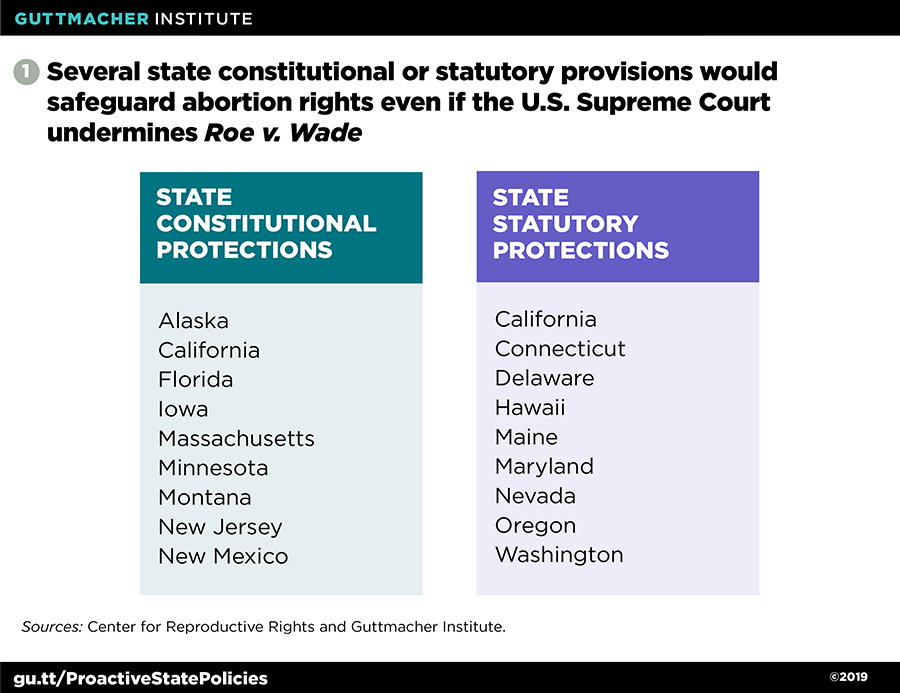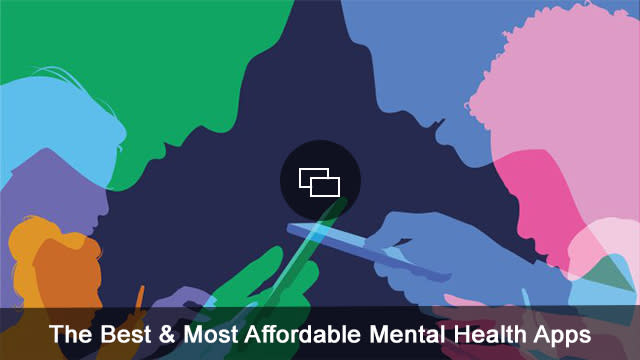5 Ways You Can Support Reproductive Rights in a Post-Roe America Right Now

The last few years (and really the last few decades) have seen an increasingly hostile environment for reproductive rights in the United States. Just under 50 years after we first saw Roe v. Wade, the landmark Supreme Court case that made abortion legal and the right to privacy the law of the land, the Supreme Court has finally (after years of court stacking and efforts from anti-choice politicians) released an opinion for Dobbs vs. Jackson that formally reversed the precedents set by Roe vs. Wade & Planned Parenthood vs. Casey that made access to abortion a federally protected right.
It is, as many reproductive rights and justice activists have been saying for years now, a devastating and deeply dangerous moment for people who can get pregnant in the United States. The situation is understandably the most dire for people in states that have seen the most restrictive anti-abortion laws passed in their legislatures and those that have so-called “trigger laws “ — Arkansas, Idaho, Kentucky, Louisiana, Mississippi, Missouri, North Dakota, Oklahoma, South Dakota, Tennessee, Texas, Utah, and Wyoming — that automatically ban the procedure as Roe is struck down.
More from SheKnows
TL;DR: People invested in safe and accessible reproductive healthcare — from abortion to birth control to IVF — are scared. And they have been scared. And many of those people are looking for proactive, productive ways to use their time, money and resources to look out for their communities. In times of stress, confusion and fear there’s a lot of knee-jerk (even if it’s well-meaning) advice floating around the Internet about where your donation money is best spent or just what to do with all of these fears and feelings — but it’s important to be strategic in these moments and make sure that fear, anger and hurt don’t get in the way of the work that can be done to protect people in this very vulnerable hour.
First: Resist the Urge to Stockpile Plan B
Among these often highly politicized ill-informed suggestions that never stops coming up? Running out to your local pharmacy and attempting to stockpile Plan B or encourage everyone in your life to get an IUD. For one, hoarding medical supplies of any kind (and especially during a time of crisis) is never a good look. It’s weird and bad behavior.
Click here to read the full article.
If the pandemic taught us anything, it’s that panic-buying is a selfish, ineffective fix to systemic problems. Picking up a reasonable amount of Plan B for yourself (that you can have and potentially use to help your immediate network, given its shelf life), if you have the means, isn’t an issue — but it is not a fix that will help the people who would be made most vulnerable by further erosion of federal abortion protections. And it’s not really going to help anyone who needs access to healthcare that is denied to them based on their state.
Plus, you do not want to be That Guy who makes emergency contraception harder for a person who needs it ASAP to get because your lizard brain decided you needed a personal stockpile.
— Kat Green (@spygirlpix) October 27, 2020
The people who will feel the effects of Roe v. Wade being overturned most acutely are going to be low-income women (most likely women of color) from states that do not have additional protections for abortion rights (particularly states with pre-1973 abortion bans that had gone unenforced or states who have passed anti-abortion legislation) and those who live in places/work hourly jobs that make traveling to a less hostile state for healthcare impossible. Many people in these states are used to feeling the heat of their reproductive rights being eroded — and have been for years. If you want to make the most impact and do the most good with the fear and anger you’re feeling, here are some better strategies:
Look for the helpers and, more importantly, become the helpers (but don’t reinvent the wheel)
If you’re already following activists and organizations in the reproductive health space, you probably saw this situation coming. If not, there’s still time to get familiar with some national and local groups doing some important work — and it helps to know that they are out there and that no one needs to start at square one. While national orgs do important work, the orgs that will benefit the most and do the most with your funds, time and energy are the smaller local organizations. Abortion funds in states that have already been under attack, the National Abortion Federation (NAF) and Abortion Action Front (AAF) are also great resources. If you have the means to set up a recurring donation to a group, you absolutely should do so. It’s a very easy way to make your presence in this fight felt consistently and sustainably.
On the local-level (where you know your money is directly working to do the most good in your community in the shortest time), you can donate to abortion funds. Like, right now.
As the National Network of Abortion Funds (NNAF) writes “Abortion funds are united as a network of local, autonomous organizations that are funding abortion and building power to fight for cultural and political change… Together abortion funds form a network of over 70 grassroots organizations that directly supported 56,155 people in fiscal year 2019. But that’s only 26 percent of the 215,573 calls our network received that year. There is great unmet need. As fierce as abortion funds are, they need more support from people like you who care about making abortion accessible.”
A cool part about abortion funds is that they recognize the power of local activists knowing what their communities need and help connect people to the experts who can do the most good in the most efficient way: “Abortion funds are autonomous in their structures and policies,” per NNAF. “Our collective power as a network is rooted in our community connections and localized expertise. Abortion funds are the experts in direct service across widely varying cultural and political geographies.” NNAF even has a handy map of funds, annotated with the work they do — from helping financially with abortion or emergency contraception to arranging transportation or lodging and educating about telemedicine options in different areas.
If you don’t have the money to spare, you can also donate your time and volunteer efforts to these groups. Defending reproductive rights is a team sport and there are all sorts of ways you and your individual talents can be useful. You might not even know the ways that you can contribute to the movement, so reach out to those in the space and offer up your time.
Put pressure on the state level — and do it consistently
The battle for reproductive rights (including the various attacks on Roe v. Wade) over the last few decades has been fought on the state level (that, mind you, is how Dobbs got to the SCOTUS in the first place). Per the Guttmacher Institute, states have enacted 1,074 abortion restrictions since the 1973 SCOTUS decision for Roe v. Wade. Of those restrictions, 288 (that’s 27 percent of them) have been enacted in the last ten years.
However, it works both ways. There are a number of states that passed constitutional or statutory provisions that work to protect people seeking abortion care even if the SCOTUS overturns Roe. If you live in one of these states — or a state that hasn’t been able to pass such provisions — link up with your local reproductive rights and justice groups to see where your time and energy can best be used to get these kind of laws on the books elsewhere. It could be calling your reps or organizing within your communities or helping put additional pressure on your elected officials (who work for you!) to fight for these rights.

Graphic Courtesy of the Guttmacher Institute
Likewise, as Manhattan District Attorney Candidate Lucy Lang wrote for SheKnows, other elected officials (including DAs) in the U.S. have the power to protect people’s reproductive rights: “Faced with the threat of Roe being overturned, prosecutors have the responsibility to honor the Constitution, fifty years of precedent, and the American public by declining to prosecute women and medical professionals whose decisions are protected by Roe,” Lang writes. “I know from experience how important it is to have the right to make this very personal decision, and I know we must do all we can to protect that right.”
While the above is something that anti-choice people are seeking to challenge with extremely dystopian future legislation, voters and communities have the power to make their areas less hostile toward reproductive rights and more hostile toward those who want to take those rights away. So it’s important to remain vigilant and not let this moment and this decision be a tragic single day of news that gets shuffled under all the other bad news that comes next.
Avoid unnecessary fear-mongering
A really important point many activists have been repeating is that it’s more helpful to emphasize the safe ways people can and should be able to access care rather than dwelling on the pre-Roe imagery (think: the clothes hanger image) that often makes it into the meme cycle. While our history is something we’re doomed to repeat if we don’t remember and in-clinic care is something that needs to be fought for patients everywhere to safely have the care they need when they needed, it’s also vital that misinformation about abortion care is dispelled swiftly and effectively and that people understand that accessing abortion — particularly medicinal abortion via the pill is incredibly safe and is something that can be accessed via telemedicine and self-managed at home.
It’s when that access is threatened or criminalized or painted as something less safe than it is that things get more dangerous.
You can buy abortion pills now to use later. 💖@AidAccessUSA is now offering a service where medical providers prescribe abortion pills to keep in your medicine cabinet. To learn more about options in your area and resources available, visit https://t.co/xMkPsqtbZl pic.twitter.com/Y8rg25oKD2
— Plan C (@Plancpills) April 29, 2022
That’s not to say that we cannot validate our communities fears and let them know that their feelings and anxieties are deeply real and worth our compassion. But, ultimately, education and promoting strategies that increase access are the name of the game right now.
Understand the fight doesn’t end at the ballot box
As a number of people who will be affected by any changes made to reproductive health access cannot vote or live in deeply gerrymandered states and counties where their vote or community GOTV efforts are not a silver bullet to these threats. While encouraging people to exercise their right to vote in ways that protect their rights and values is important, it’s not really the helpful thing to say right now.
(Also, telling disenfranchised people to vote in a world where the senators who voted against the confirmation of Amy Coney Barrett (a key player in this majority) represent 13,524,906 more people than the senators who voted to confirm her is not effective.)
But, if you have the ability to take action on that level (particularly somewhere where your voice can support the voiceless?) in addition to the more grassroots, community-driven work, it’s a simple way to take care of your own on top of some of these more immediate actions.
A version of this story was published October 2020.
While you work to take care of others, take care of yourself too. Check out a few of our favorite (and more affordable) mental health apps to look after your brain:
Launch Gallery: Celebrities Who Opened Up About Having Abortions
Best of SheKnows
Sign up for SheKnows' Newsletter.
For the latest news, follow us on Facebook, Twitter, and Instagram.


